The Encyclopedia of Herbs

The Encyclopedia of HERBS
A Comprehensive Reference to Herbs of Flavor and Fragrance
Arthur O. Tucker
and
Thomas DeBaggio
Edited by Francesco DeBaggio

Copyright 2009 by Arthur O. Tucker and Thomas DeBaggio. All rights reserved.
Illustrations copyright 2000 by Marjorie C. Leggitt.
Frontispiece: Wasabia japonica. Opposite: Geranium macrorrhizum.
An earlier edition of this volume was published as The Big Book of Herbs (Interweave Press, 2000).
Published in 2009 by Timber Press, Inc.
The Haseltine Building
133 S.W. Second Avenue, Suite 450
Portland, Oregon 97204-3527
www.timberpress.com
2 The Quadrant
135 Salusbury Road
London NW6 6RJ
www.timberpress.co.uk
ISBN-13: 978-0-88192-994-2
Printed in China
Library of Congress Cataloging-in-Publication Data
Tucker, Arthur O.
The encyclopedia of herbs: a comprehensive reference to herbs of flavor and fragrance / Arthur O. Tucker and Thomas DeBaggio; edited by Francesco DeBaggio.[2nd ed.]
p. cm.
Earlier edition published as: The big book of herbs, Interweave Press, 2000.
Includes bibliographical references and index.
ISBN 978-0-88192-994-2 (alk. paper)
1. Herbs. 2. Herb gardening. 3. HerbsUtilization. I. DeBaggio, Thomas, 1942 II. DeBaggio, Francesco. III. Tucker, Arthur O. Big book of herbs. IV. Title.
SB351.H5T777 2009
635.7dc22
2009016700
A catalog record for this book is also available from the British Library.

Contents

Introduction
THIS BOOK PROVIDES accurate information to help identify, grow, and use hundreds of herbs. Although it draws heavily on scientific research from around the world, it is tempered by personal gardening experience and written in a simple understandable style.
No single book is big enough to describe all the plants called herbs, so we have focused on herbs that are most common in home gardens, catalogs, restaurants, and markets (or should be). For the purpose of this book, we define an herb as any temperate climate herbaceous or woody plant used for flavor or fragrance. This excludes a wide range of herbs for medicine, dyes, fibers, insecticides, soap, and rubber.
We believe our range, while limited, remains wide. Old favorites, such as basil, dill, parsley, coriander, lavender, mint, sage, rosemary, tarragon, and thyme are included in detail and many species that have not reached a wide audience are included. Among the unusual or hard to find herbs are rau r m or Vietnamese cilantro (Persicaria odorata), which immigrated to the United States along with the airlift of 140,000 Vietnamese in 1975. Another cilantro-flavored ethnic herb, papaloquelite (Porophyllum ruderale subsp. macrocephalum), comes from south of the border. This nine-foot marigold relative has been used in Mexican cooking for centuries but only entered Texan cuisine around 1990.
m or Vietnamese cilantro (Persicaria odorata), which immigrated to the United States along with the airlift of 140,000 Vietnamese in 1975. Another cilantro-flavored ethnic herb, papaloquelite (Porophyllum ruderale subsp. macrocephalum), comes from south of the border. This nine-foot marigold relative has been used in Mexican cooking for centuries but only entered Texan cuisine around 1990.
The Encyclopedia of Herbs grew from our frustration with the superficial treatment of our favorite herbs and the gross errors about them in many popular herb books (a recent one erroneously claimed that dill resembles fennel in appearance and aroma). We have spent years searching for thorough, unbiased research to dispel many cultivation myths perpetuated by four centuries of misinformation.
The most interesting data we uncovered was not in the popular press but in small circulation technical books and journals where scientists use shorthand and jargon to communicate with each other. This is one of the first times that most of these research findings have been available in a non-scientific venue.
We rely on botanists and agricultural scientists for an understanding of herbs and their cultivation, and we believe that their research provides useful guidelines, but it is not infallible and should not be read as the last word on the subject. Every spring brings new revelations to the observant gardener, as well as to the careful scientists.
The first edition of this book, entitled The Big Book of Herbs and published by Interweave Press, was extremely well received, earning awards from both the International Herb Association (2001 Book Awards) and The Herb Society of America (Gertrude B. Foster Award, 2004). However, in the intervening years, amounting to almost a decade of newly published literature, new information has emerged (e.g., absinthism was probably due to adulterants, not the content of thujones) and scientific names have changed (e.g., vetiver is now Chrysopogon zizanioides). In addition, we found a number of typographical errors or species that we had inadvertently excluded (e.g., Agastache scrophulariifolia). Other sections (e.g., Pelargonium) have been completely revamped. We thank all those conscientious readers who wrote to us with these enlightenments and hope that this book will be your ultimate reference on culinary and fragrant herbs for years to come.
Many readers, from gardeners to academics, also wrote to thank us for including the references. Actually, this is not just academic show-and-tell or some sort of weird academic compulsive disorder; it protects us legally. Pay particular attention to our wording in the following chapters. In accordance with the First Amendment of the U.S. Constitution, we may freely (1) quote scientific literature, (2) quote ethnic or historic literature, or (3) cite how we personally use herbs. However, as soon as we use terms like recommend, prescribe, or show advocacy for consumption for herbs that are not GRAS (Generally Recognized As Safe) by the U.S. Food and Drug Administration, then we (and the publisher) are legally liable. Readers should pay particular attention to this when advocating herbs like sassafras, which is not GRAS and has been shown to be a pre-hepatocarcinogen; while you may not accept the scientific literature, you are legally liable if you advocate its consumption and somebody does develop liver cancer (which may not even be related to the consumption of sassafras). In our litigious society today, this warning is not just scientific arrogance, and even if you win a legal suit, you still have to pay lawyers in most states and go through the hassle and time. When we make a statement, such as garlic being antifungal, we have cited scientific papers to support that statement. Herbs also fight a long uphill battle to prove their efficacy. Popular medical journals will publish poorly conducted research that shows negative effects, and the popular press will subsequently seize upon this, disregarding the many other well-conducted positive studies. We also hope that these references will prompt readers to locate the original scientific literature from their libraries and investigate a topic further to make their own well-informed decisions, and if we have inspired at least one student to research a topic further, then we have succeeded.
How to Use the Book
Next page
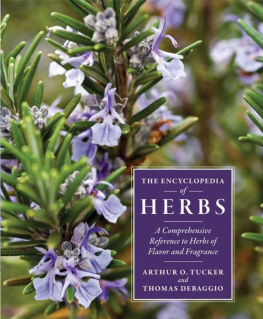
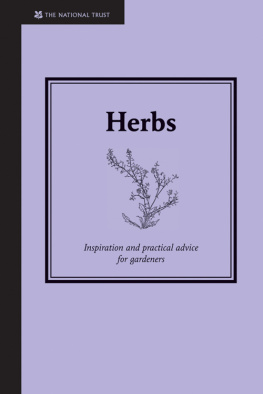


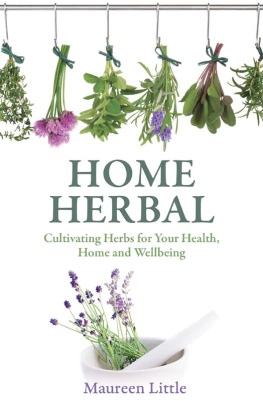
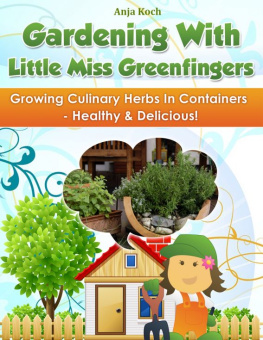
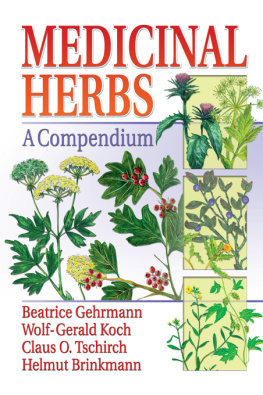
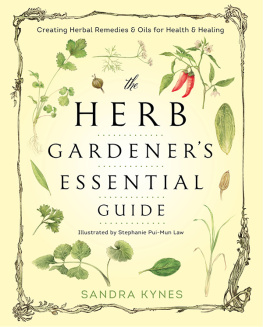
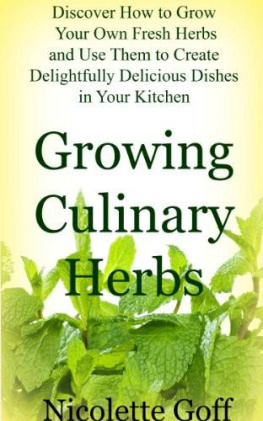
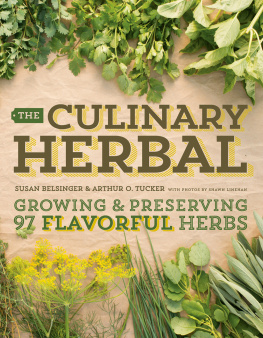




 m or Vietnamese cilantro (Persicaria odorata), which immigrated to the United States along with the airlift of 140,000 Vietnamese in 1975. Another cilantro-flavored ethnic herb, papaloquelite (Porophyllum ruderale subsp. macrocephalum), comes from south of the border. This nine-foot marigold relative has been used in Mexican cooking for centuries but only entered Texan cuisine around 1990.
m or Vietnamese cilantro (Persicaria odorata), which immigrated to the United States along with the airlift of 140,000 Vietnamese in 1975. Another cilantro-flavored ethnic herb, papaloquelite (Porophyllum ruderale subsp. macrocephalum), comes from south of the border. This nine-foot marigold relative has been used in Mexican cooking for centuries but only entered Texan cuisine around 1990.